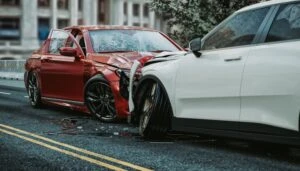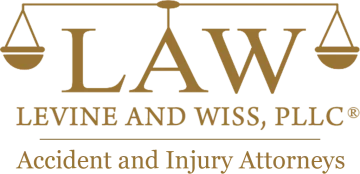
In a car accident, fault is typically determined by law enforcement, insurance companies, and court officials after looking at the available evidence and identifying the cause. From there, once fault is determined, the victims can file claims against the at-fault parties.
However, there’s more that goes into the process of determining fault in a car accident. There are many reasons why retaining a Westbury car accident lawyer to represent you is important as well. Let’s look more closely at the factors that can influence the decision.
The Specific Factors That Are Considered When Determining Fault in a Car Crash
When answering the question, “How is fault determined in a car accident?” your attorney will want to consider a wide array of factors. Details like these can help your attorney establish the sequence of events that ultimately led up to the crash.
Let’s take a look at circumstances that can play a role in the determination of fault in a car-related collision. From there, we can explore when to hire a car accident lawyer and what legal representation can do for you as the victim of a collision.
Traffic Laws in Place at the Time of the Car Crash
Traffic laws typically play a key role in the process of determining fault. Law enforcement officers will usually review whether any of the drivers involved in the crash engaged in poor driving behavior.
For example, did anyone violate traffic regulations by speeding, running a red light, or failing to yield to the right of way? Violations like these can often result in one party being deemed as at-fault for the accident.
Evidence Gathered from the Scene of the Collision
When investigators are tasked with figuring out who’s at fault for a car crash, they will often collect as much physical evidence as possible from the scene of the accident. Here’s what the evidence often includes:
- The length and placement of tire marks: This information can help the professionals establish the vehicle’s speed at the time of the accident. It can also offer insight into whether the at-fault driver attempted to stop before colliding with other vehicles.
- Any damage caused to other vehicles on the road: The type of damage that other cars sustain—as well as where these signs of damage are located on the vehicle—can reveal information about how the crash took place. For example, rear-end collisions often indicate that the rear driver was at fault. Meanwhile, side-impact crashes might suggest that a driver failed to yield or stop at a red light.
- The conditions of the road at the time of the crash: Poor road conditions—such as rain, snow, hail, sleet, or ice—can play a r—can contribute to accidents. Although they are not an excuse for reckless driving, they are undoubtedly a factor in determining how each driver responds to the situation.
Witness Statements Collected from People Who Were There
Eyewitness testimonies are helpful pieces of evidence when determining fault in a car crash. People who witnessed the crash can explain what happened before, during, and after the accident. Their statements can also clarify details that might be unclear.
Police Reports From the Date of the Incident
A police report can help professionals determine who caused the accident because it contains all the information that law enforcement gathered at the scene of the crash. Officers often investigate the collision, speak with witnesses, and collect evidence.
Based on their investigation, officers might also issue citations to the driver they believe caused the accident. The officer’s final report will summarize the circumstances of the accident and may include their conclusion regarding who was at fault.
The Process of Determining Fault in a Car Accident
Not all cases are the same, meaning the process of determining fault in one crash may differ in various ways. However, a generalized process is often followed when trying to determine who caused the collision.
Here’s what you can expect:
- Reporting the accident to law enforcement
- Gathering evidence from all parties involved
- Filing claims with insurance providers
- Working with insurance adjusters
- Determining who caused the collision
- Evaluating instances where fault is contested
- Negotiating a settlement
- Litigating in court if necessary
What is the Statute of Limitations For Car Accidents in New York?
In New York, the statute of limitations for car accident claims is three years. This means that if you were involved in an accident and you want to pursue compensation, you must file your claim within 36 months.
Please note that this statute goes into effect the day the collision occurs. If you don’t take legal action within this time frame, you could lose your legal right to seek justice on your own behalf, so the sooner you contact a Westbury car accident attorney, the better.
Click to contact our personal injury lawyers today
Contact a Westbury Car Accident Law Firm For Legal Advice When Determining Fault in a Collision
Before you can secure compensation for the damages you sustained in a car crash, it’s important to determine fault. Whether through law enforcement, insurance companies, or court proceedings, a Westbury car accident attorney can help you understand the process involved.
At Levine And Wiss, we have served thousands of clients and recovered hundreds of millions in compensation. You can lean on us because we’re here to help you through this trying time. Reach out today to learn more about us and what we can do for you.


